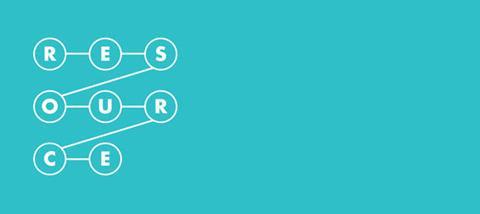
Trowel and error
10 minutes
If someone was going to write a biography about you, what would they call it and why? Take time to share it with the group (Andy Murray’s is called Hitting back, Alan Titchmarsh’s Trowel and Error, Shane Ritchie’s Rags to Richie). Discuss:
• What’s the best book you’ve read? Why?
• Did anyone say the Bible? Do you read yours? Why / why not?
Library
5 minutes
Play the Beauty and the Beast clip from premieryouthwork.com/links. Say: the Bible isn’t one book. It’s 66 different books, it’s more like a library. The Bible is split into two big chunks, the Old and the New Testament. The word ‘testament’ means covenant, or promise. The Old Testament is God’s promise to his people about what is to come, and how to live. In the New Testament, God fulfils this promise in Jesus, teaching us how we can live in relationship with him.
When was it written, and who wrote it?
15 minutes
Discuss:
• How many different types of writing do you know about in the Bible? (story, poetry, historical account, eyewitness testimony, prophetic revelation, letters)
• Have you ever read the whole Bible? How long did it take you? Which bits were easier / harder to read?
Say: The Old Testament is made up of 39 different books that were written over at least a 1,000 year period. The time span is approximately from 1500 BC to the middle of Fifth Century BC. The New Testament is made up of 27 books. The time of writing between these was much shorter, about 50-70 years, with the earliest written around AD 40. This means that when those texts were being shared, there would have been plenty of people around who would kick up a fuss if what was written was inaccurate. But there are no First- Century writings that contradict the New Testament.
The books of the Bible are written by many different authors, some unknown. But, there is a consistent thread of love running throughout the Bible.
Isn’t it just a book?
5 minutes
Ask the group to discuss: what do different people use the Bible for? Think about historians, academics, writers, Christians, RE teachers, artists. (Answer: people use it for very different things, but they can all be valid.)
KEY POINT 1
The Bible is unique. It can be read as a historical document, containing interesting information, but also as a life guide, full of spiritual encouragement and inspired by God. It is like a map which helps guide us, and a big story in which we have a part. It’s part of our history, and it shows us our future.
Why trust it?
15 minutes
We don’t have any original copies of the Bible left. But we do have manuscript evidence. Before there were computers, printers and high speed technology, important documents were painstakingly written out by hand. Each version of this is called a manuscript. For old documents, the more manuscripts or copies there are, the more valid a document is seen to be. Get the young people to guess how many manuscripts there are for: Homer’s Iliad (643), Plato (7) and The New Testament (over 24,000 - more than any other ancient document).
The Dead Sea Scrolls were found in 1947, and are dated from the Third Century BC to the First Century AD. They are 1,000 years older (therefore closer to the originals) than anything found before. These scrolls contain every Old Testament book except Esther. They are identical in over 95 per cent of the copies, and the other five per cent is mostly spelling differences.
EXPERIMENT
10 minutes
Choose three people. Send one out of the room. Shut the door but make sure they can listen from outside. Ask the second person to stay where they are and put on headphones. Put a blindfold on the third person so they can hear but not see. Let off the party popper, throw the toy snake on the floor and hand round the kitten picture. Encourage everyone to react as normal: shrieks / laughter / awww. First, ask the person who was outside what they experienced. Then ask the other two, one at a time. Is what each person said different? (Probably). Did the event still happen? (Yes).
KEY POINT 2
The Gospels are eyewitness accounts and they contain differences between them. This is a good indicator that they are real accounts of a real event. The writers of the Gospels all had a different experience of living alongside Jesus, reflected in the books themselves.
Read and reflect - 2 TIMOTHY 3: 14-17
5 minutes
Read 2 Timothy 3:14-17 and discuss: how do you feel about these verses? Do you agree? What are your favourite Bible verses?
Active prayer
10 minutes
Chose one of these three options:
• Get a map and stick a pin to mark North Korea. Pray for Christians there where it is illegal to even own a Bible. Pray for those who risk their lives to read it and find life.
• Read it! Get a Bible out – try a different translation and find your favourite verse, or look up someone else’s. Pray that God will speak to you through his word.
• Creative prayer: get a newspaper and a black marker, and go through, crossing out some words and choosing some to make a prayer to God. Praise him for literature, for different ways of writing and that we can read and write freely. Pray that you will use that responsibility well, that you will read and write what matters and what will honour him.
Close by challenging the group to read the whole Bible in a year. There are some suggested plans at premieryouthwork.com/links.
Jessie Walrond trained at the OCCA and is a rural evangelist in Norfolk.











































